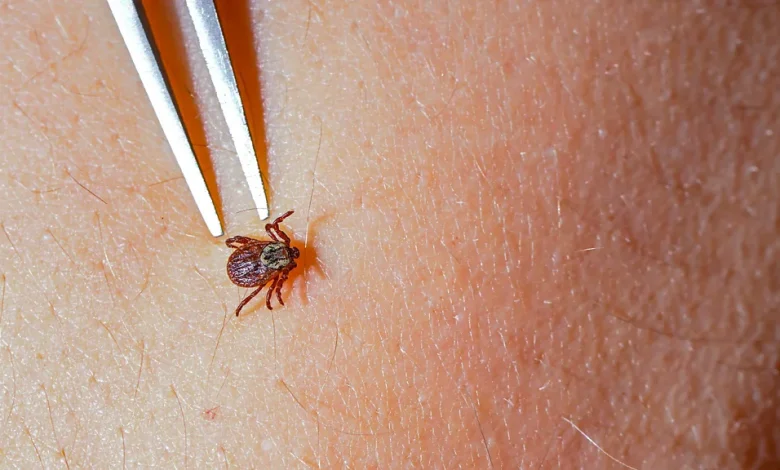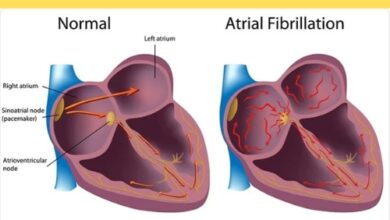Lyme disease is becoming more common. But its symptoms aren’t always easy to spot

Lyme disease is becoming more commonplace worldwide as a result of climate change. However, a lot of doctors are having trouble identifying its symptoms.
Ticks are parasitic bloodsuckers that are second only to mosquitoes in terms of disease transmission to humans. You might not even feel the bite when it occurs, which increases your risk of infection and serious illness.
With eight legs and a body the size of an apple seed, these spider-like arachnids can release an anti-inflammatory to cover up their eating. This lets a variety of bacteria that cause disease that may have previously infected the tick hitch a ride into your bloodstream.
The spiral-shaped bacterium Borrelia burgdorferi, which causes Lyme disease or Borreliosis, is the most well-known of these freeloaders. It was first discovered in 1975 in the American town of Lyme, Connecticut, when both adults and children started exhibiting symptoms resembling arthritis.
But there are a lot more symptoms associated with Lyme disease, and if treatment is delayed, these symptoms may become more diversified. “It’s a kind of bacteria that infiltrates every bodily tissue,” explains Jack Lambert, an infectious disease consultant, University College Dublin professor of medicine, and the center’s founder.
It travels to both the joints and the brain. According to Lambert, it affects the bladder, the intestines, the peripheral nerve system, the muscles, and the nervous system.
In addition, severe exhaustion, heart issues, facial paralysis, and excruciating pins and needles in the hands and feet can all be symptoms of Lyme disease. Because of the variety of symptoms, not every patient is given the attention they deserve.
According to Brian Fallon, director of Columbia University’s Lyme and Tick-Borne Diseases Research Center in New York, “there was a big debate early in the days of Lyme disease.” “Do patients invent symptoms? Do they have hypochondria, believing they are sick when they are not? That’s what caused a lot of difficulties in treating these people in the early 1990s.”
That conflict still exists. Ren, a Welsh rapper, was initially diagnosed with both chronic fatigue syndrome and bipolar disorder. Before receiving a proper Lyme diagnosis in 2015, he was bedridden for a number of years and even had to put his singing career on hold. As a result of the infection, he continues to get therapy for autoimmune diseases.
In most cases, persons who receive prompt antibiotic treatment can recover from Lyme disease, which is rarely fatal. The diagnosis is problematic because many doctors overemphasize the first appearance of an enlarging rash (erythema migrans) with red concentric “bullseye” rings that resemble a dart board’s center target.
According to Lambert, “the bullseye rash is not always a bullseye.” It is elliptical in nature. It can be a thick rash. The rash can blister. It might be a contusion. Furthermore, it doesn’t resemble a bullseye at all on dark skin. Frequently, the general practitioner misdiagnoses ringworm even in cases of characteristic bullseye rash. However, ringworm is just a rash. It does not have memory issues or joint pain.”
I will now acknowledge that, having been bitten by a tick in June 2023—possibly during a wildflower walk—I have (actual) skin in the game. In addition to preying on mammals like cattle, deer, mice, and pets, ticks also perch at the tips of low-lying grasses and foliage, where they wait for unwary victims.
For the following three months, my growing rash was ignored by three separate doctors because it wasn’t a bullseye. First, antifungal, then antibacterial, and finally antihistamine lotions were recommended to me. The rash just grew larger.
Eventually, in September 2023, while visiting my son in Pennsylvania, I received a Lyme diagnosis in the United States. The rash had grown from 2-3 cm (0.8-1.2 in) to a red, rugby ball-shaped splotch that covered my whole stomach by this point. My left knee was likewise covered with a similar rash.
Luckily, Pennsylvania is a hotspot for the sickness (at least for me, not for the residents). An estimated 476,000 Americans receive a Lyme disease diagnosis each year, primarily from black-legged “deer” ticks. Tweezers are frequently carried by hikers with the express purpose of extracting any imbedded ticks from their skin, face down.
Following my diagnosis, the doctor gave me a prescription for a course of doxycycline that was to last for one month. My stomach and knee rashes subsided and vanished. Together with the headaches, fatigue, sweating at night, and trouble sleeping, there was also a generalized unpleasant malaise of feeling like “something’s not right.” It was a great relief to know that Lyme illness might result in major long-term health difficulties.
Actor Ben Stiller, model Bella Hadid, comedian Amy Schumer, musicians Justin Bieber, Shania Twain, and Avril Lavigne, and 22-year-old Belgian cyclist Arnaud De Lie have all recently disclosed that they had contracted Lyme disease.
“A sub-group of patients can develop a significantly impairing illness,” Fallon states. “That’s been one of the conundrums and puzzles in the Lyme disease world, which is why do most people get well while others go onto develop persistent symptoms.”
Regretfully, my symptoms worsened and resurfaced a few weeks after my treatment was stopped. By January 2024, I was experiencing severe exhaustion, a stiff neck, partial memory loss, and mental difficulty finding particular phrases. Two Lyme tests are used in the conventional diagnosis: the western blot and the enzyme-linked immunosorbent assay (Elisa). These identify blood antibodies that are unique to the Borrelia bacterium, but they do not identify active infections. In my instance, they did find the reactivated Epstein-Barr virus, which frequently coexists with autoimmune illnesses, along with a number of other bacterial co-infections linked to ticks, including bartonellosis, babesiosis, and Ehrlichiosis.
I took three courses of antibiotics for a duration of one year following my first tick bite, and I am currently among those who have been diagnosed with post-treatment Lyme disease syndrome. Although my fatigue has subsided, I am still experiencing terrible, continuous tingling in my legs and feet, which is the result of neuropathy. I also can’t get rid of the worry that my swelling left knee isn’t just a persistent pain from tennis; it’s arthritis linked to Lyme disease.
Still, I count myself fortunate. In 2016, Richard Wilson, a former BBC environment correspondent and documentarian, suffered a tick bite. Even though he discovered the tick lodged in his arm and experienced a rash a few days later, he was told, “It’s not a bullseye, so it’s not Lyme.”
Two years later, he insisted on a Lyme test due to ongoing fatigue and gastrointestinal problems. The result was negative. “What nobody told me is that tests can be as much as 25% false negative,” he informs me.
Lambert compared it to the situation where a person may have negative results from a Covid test but still exhibit symptoms. “We use common sense when it comes to Long Covid,” he states. “The years of battling this virus have weakened their immune system. We appear to be weak in medical practice education regarding Lyme disease at all levels. Gaslighting is a serious problem.
Over the ensuing years, Wilson’s symptoms were attributed to a variety of illnesses. They were all gradually eliminated. “I think I’ve had seven gallstone referrals now,” he stated. “So out came my gallbladder and out went the contents of my bank balance and nothing changed.”
Wilson’s Lyme disease was left untreated for over eight years after the initial tick bite, when a test eventually revealed a positive result. Many people pay for their own travel to specialized Lyme treatments. “If I had at that point been given antibiotics,” he continues, “I think things would have turned out very differently.”
therapy for chronic Lyme disease, defined as symptoms that persist six months or more after starting therapy, is controversial, particularly when it comes to using herbal therapies. Few have undergone peer review in scientific journals, despite the fact that several are gaining medical attention. I’m currently taking a herbal cocktail that contains cat’s claw bark, Chinese skullcap, wormwood, reishi mushroom extract, resveratrol, and oil of oregano. A few of these exhibit promise in vitro, but “more evidence needed” is where they stand. However, what is the optimal number of antibiotic courses?
“Patients have turned to herbalists because that was the only option,” Lambert explains. “Some do function and possess anti-infective properties, but have they undergone testing? No, since there isn’t any motivation to conduct research. Some receive non-conventional care, such being severely cold to eradicate bacteria. I’m not on board. There are certain dubious remedies available. Antibiotics are the most effective treatment for infections.”
A vaccine called LYMERix was formerly available, but SmithKlein Beecham (now part of GlaxoSmithKlein) discontinued it in 2002 as a result of a combination of falling sales and unfavorable media attention during a period when the general public was losing faith in vaccinations and the possibility of adverse consequences. Fallon remarks, “It’s ridiculous that we don’t have a vaccine.” “We do currently have one vaccine [made by Pfizer] in phase three testing, and it should be available for purchase in the coming years.
“The good news is that most people can get better over time,” he states. “What’s difficult is the post-infectious Lyme arthritis and those unfortunate individuals who do experience serious, ongoing problems. In the next five to ten years, there will be significant advancements in medicine, which is now advancing at a rapid pace.
It’s not just me who wishes for it.




